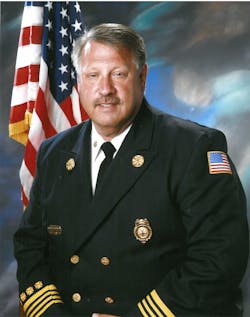The fire service is certainly known for its evolutionary change. Every tool, procedure, idea and even NFPA standard is another step up the ladder to improvement as we learn what works, what does not work and how we can make it better.
I remember when my fire chief in St. Louis was selected to sit on the new NFPA 1500 committee. There was no standard at the time for a fire department occupational safety and health program. When the technical committee started in the late 1980s, firefighters were dying in record numbers, and many were suffering disabling, career-ending injuries. Others were contracting diseases from patients. There was firefighting protective gear and breathing systems, but there were no real standards that manufacturers had to meet.
Since the inception of NFPA 1500, many other standards have evolved to protect firefighters, including the those related to safety officers, safety programs, standards for medical and physical conditions, wellness programs, critical incident stress debriefing (CISD) and much more.
One standard that evolved from NFPA 1500 was NFPA 1584: Standard on the Rehabilitation Process for Members During Emergency Operations and Training Exercises. This document was first released as a Recommendation in 2003 and was completely revised and upgraded to a Standard in 2008 to include the medical monitoring of firefighters during operations.
The updates
The 2015 edition of the standard was released on Jan. 9, 2015, and reflects current science and knowledge on fire rehab, outlining the roles and responsibilities in the rehab area; emphasizing the importance of proper nutrition, hydration and healthy lifestyle pre- and post-rehab; and providing details on the diagnosis and treatment of heat and cold stress as well as newly expanded requirements related to the medical monitoring.
Some components: Firefighters should be rehabbed following the use of a second 30-minute or 45-minute SCBA cylinder, a single 60-minute SCBA cylinder or 40 minutes of intense work without SCBA. Further, NFPA 1584 requires ongoing observation and assessment of on-scene personnel to maintain their optimal health and safety.
There are two significant requirements added to the 2015 NFPA 1584 Standard, in section 6.2.6—Medical Monitoring and Emergency Medical Care.
The first change calls for obtaining vital signs for all firefighters entering rehabilitation after operations. This includes capturing the temperature, heart rate, respiratory rate, blood pressure and a pulse oximetry reading.
The second big change is that any firefighter involved in firefighting operations who is sent to rehab should be monitored for carbon monoxide (CO). This new requirement was added as subsection 6.2.6.3.2 under 6.2.6—Medical Monitoring and Emergency Medical Care.
The new requirement reflects the growing awareness of the risks of CO, the difficulty assessing CO through signs and symptoms, the availability of reliable CO monitors, and the safety benefits of CO monitoring at the scene and during training. Odorless and colorless, CO is found at every fire. Firefighters who have been involved in overhaul operations without an SCBA have been found with high levels of CO. Firefighters who have headaches, nausea, shortness of breath or gastrointestinal symptoms should always been assessed for CO poisoning. Some medical experts have even linked high levels of CO in a firefighter’s system to some cardiac event within a 24-hour period.
Training the troops
My department was fortunate to recently go through a national emergency incident rehabilitation and medical monitoring training program related to the NFPA 1584 updates. First, developed in 2008 by Masimo in cooperation with the IAFC, the program was designed to provide a bridge between the language of the standard and the realities of operations within the fire service. With the rollout of the revised NFPA 1584 standard this year, Masimo has updated its training program in addition to adding implementation tools, such as SOP templates, rehab forms and budget templates.
During the first training class—which was held at my department at the Illinois Fire Service Institute, located in Champaign, IL—firefighters and other emergency personnel learned the basics of NFPA 1584 and were briefed on the additions. For example, students were taught that the volume of fluid intake should equal that of sweat output as well as how to determine the levels of CO in firefighters who have been engaged in firefighting operations.
Masimo plans to continue this type of training for other departments, developing a national network of trainers to put the training within reach of all departments and complete what was started in 2008.
Learn more
Masimo is committed to firefighter safety and is working with the IAFC and the IAFF on programs to educate and create awareness for the medical monitoring and rehab of firefighters. Those programs will be rolled out in the future. In the meantime, if you are interested in learning more, visit Masimo.com.
Pull Quote option: Any firefighter involved in firefighting operations who is sent to rehab should be monitored for carbon monoxide.
New bio for Gary:
GARY LUDWIG, MS, EMT-P, a Firehouse® contributing editor, is the fire chief of the Champaign, IL, Fire Department. He has a total of 37 years of fire, rescue and EMS experience. He is a well-known author and lecturer who has successfully managed two large award-winning metropolitan fire-based EMS systems in St. Louis and Memphis. Ludwig is a licensed paramedic and has a master’s degree in business and management. He is past chair of the EMS Section for the IAFC. He is the author of the recently published book Blood, Sweat, Tears, and Prayers.
Along with his CONNECT info






